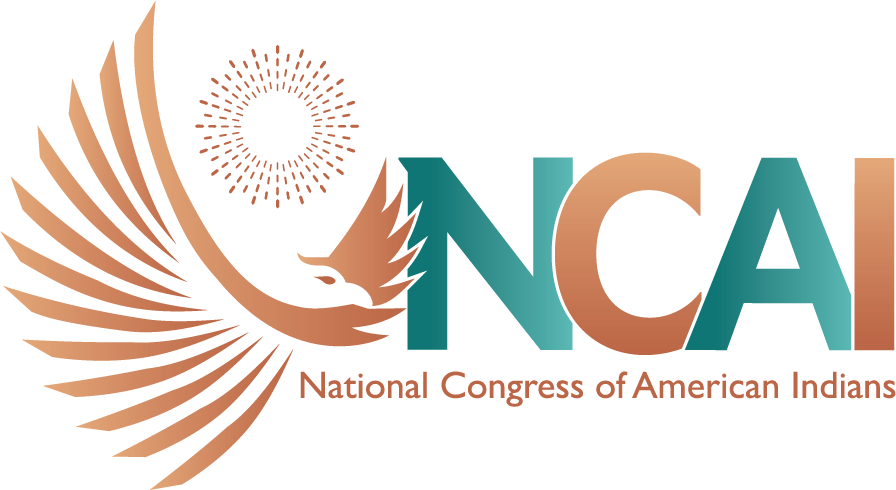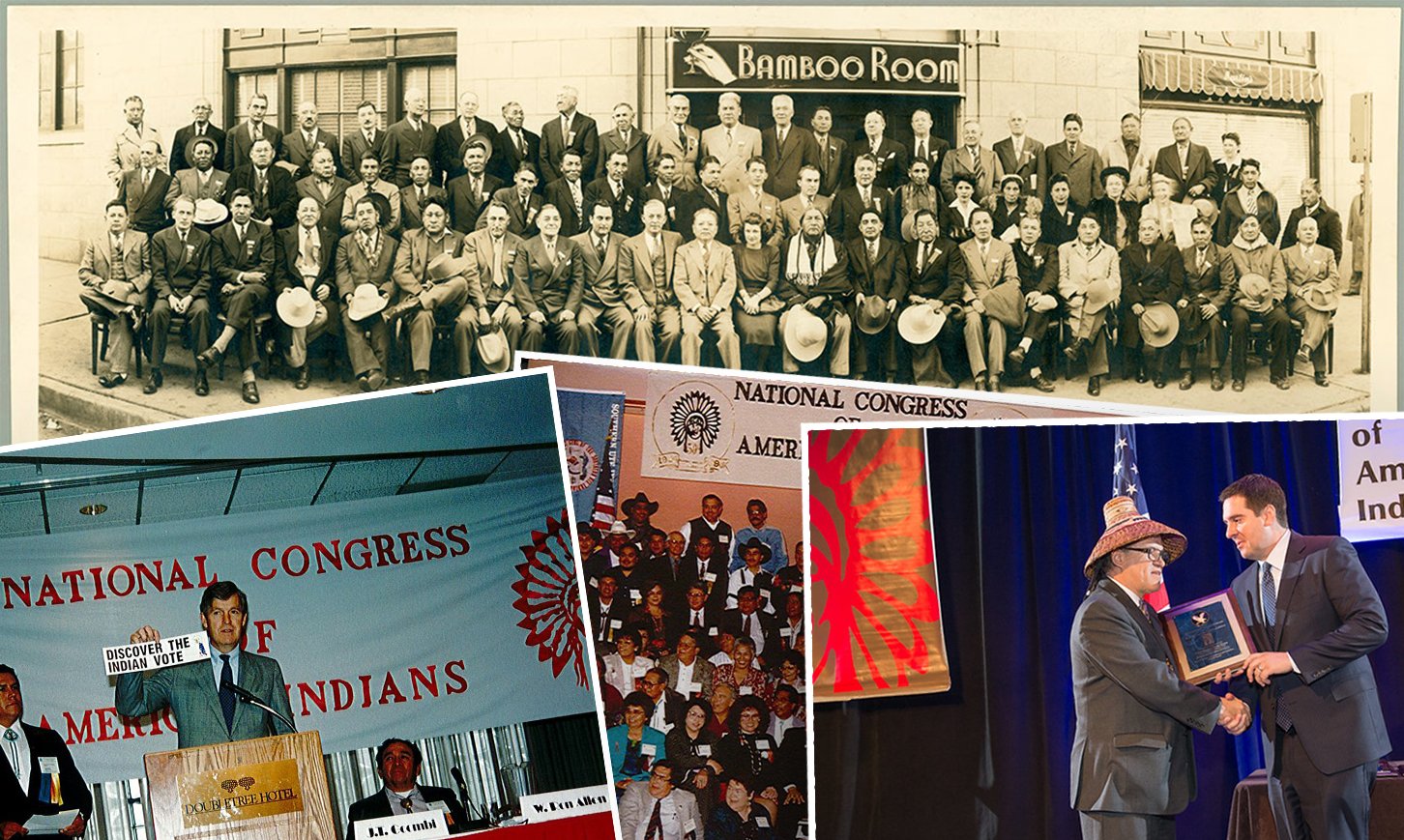
The National Congress of American Indians
The National Congress of American Indians was founded in 1944 and is the oldest and largest organisation serving the broad interests of tribal governments and communities.


The National Congress of American Indians has been using Asset Bank for two years, but its most recent media project has truly benefited from the rich tapestry of data and information built during that time.
4,000 assets
The NCAI has more than 4,000 documents in their Asset Bank
80 years of history
Decades of history distilled in one central place
One mission
Keeping history alive to inform present-day activities
The National Congress of American Indians (NCAI) was founded in 1944—that’s 80 years of rich history buried deep in the archives of the Smithsonian National Museum of the American Indian.
When Suzanne started working at the NCAI, she dreamt of bringing the organisation’s traditional paper collection to the masses. She hoped to unlock the door to the past and create a bank of resources that told the full story of the NCAI.
“When I first started working here, I was like, oh, there’s all this material that had never seen the light of day—unless somebody had gone to the archives in the Smithsonian, made an appointment, and sat there leafing through it.”
By digitising the organisation’s historic documents and policies, the NCAI team hoped to build a bank of resources that could be used for years to come.
And, when you’re handling upwards of 4,000 policy statements and resolutions (essentially a proposal asking a group to take action), you need a tool that can rise to the challenge—a tool that can easily document 80 years of history, organise thousands of resources, and save the time staff were once spending sifting through old paper archives.
Enter Asset Bank...
the challenge
Digitising 80 years of rich, scattered history
All of the NCAI’s policy work is guided by a resolutions process that dates back to 1944. Members can draft and submit a policy recommendation which then travels through subcommittees and subject areas before being amended, rejected, or adopted. It’s a lengthy process that was made more difficult by the organisation’s paper archives.
It didn’t help that a significant amount of materials were stored on a huge shared drive that was almost impossible to navigate.
It would take the NCAI team members hours to uncover and source the documents they needed. In a last-ditch attempt to file and organise 80 years of history so it can be searched for and used in future activities, NCAI turned to Asset Bank.
Building a central library of searchable historic documents

Creating tagged collections
“We have statements on issues that date back to 1944 that are still incredibly relevant today and still guide a lot of our work. The first job I had was to identify, collect, and digitise these paper documents and upload them into Asset Bank.”
The NCAI team leaned on the ability to organise and tag entries in Asset Bank.
“I included a title, the date they were adopted, the subject matter, and any keywords with each new entry. In addition, we also tagged each entry with the relevant tribal nations.”
Now, NCAI team members can enter a keyword or filter by tribal nation and get instant access to every relevant document and resource.
Searchable resolutions
“A big part of using Asset Bank is having a text searchable feature. The resolutions are uploaded as PDFs and, if someone comes to me and asks for a resolution on a particular topic, I can pull up everything we’ve ever said about that topic.”
It certainly beats venturing into the archives of the Smithsonian to pour over thousands of paper documents just to find the right piece.
Digitising history
The NCAI’s historic newsletter, The Sentinel, has long been a way to inform members and potential members about the organisation’s progress.
Before Asset Bank, the backlog of past editions was tucked away in a closet in the building—nobody ever really looked at them. With the help of Asset Bank, the team has breathed new life into the old editions by digitising each version.
Creating a central resource hub
It’s no surprise that the NCAI’s huge library of resources has become scattered over the years—just think about how many world events the documents have seen, let alone the number of changing hands they’ve passed through over almost a century.
Asset Bank is the perfect solution for finally bringing everything back together in one place.
“The more we’re able to show our long history and persistent fight using the historical materials, the better we are able to support the work we do today.”
With all the resolutions, documents, and files in one easy-to-access place, the team can find the information they need in just a few clicks.
A database of historic records in just a few clicks

Using historic resources to inform present-day projects
“We’ve decided to launch a blog and a podcast with historical content as we come up to our 80th anniversary. One of the things leadership wanted was more storytelling about our history and better presentation of the historical content we have.”
Since the team has uploaded all of the past editions of The Sentinel and previous resolutions, there is a wealth of materials ready for historical research that can go on to form the basis of the blog posts and podcast episodes.
“Before the system was in place, this would have been a massive undertaking. Every time we wanted to research a subject, we’d have to pull out boxes from a garage or go to the Smithsonian for research appointments.”
Now that the resources have been digitised and organised in a searchable format, the team simply holds strategy meetings to come up with the subject for the next episode. Then, staff members can instantly access the historical materials to support that episode.
“Without Asset Bank, we wouldn’t have been able to embark on this project. In fact, we discussed it in 2018 and decided it wouldn’t be possible—we didn’t know how we’d get the information or write each episode without easy access to the materials. It would have taken too long and we don’t have someone who can devote hours and hours to digging out the right materials.”
Sharing documents with institutions
The use of Asset Bank has led to other side projects with the aim of bringing all historical records into the present day.
“I’ve worked with The Smithsonian archivists to start a programme to digitise the materials they have in their custody. When they digitise them, they send them to me and if I deem them to be relevant then I upload them to Asset Bank.”
Sharing resources like this is a core activity of an organisation like the NCAI. In order to provide a 360-degree view of history, they need to present a comprehensive library of documents from a variety of sources. Asset Bank has helped the NCAI digitise these documents and file relevant ones in their system.
Hours of saved time
Imagine the process team members had to go through to find relevant resources before Asset Bank. They’d have taken time out of their day to visit the Smithsonian, pre-booked an appointment, and leafed through endless paper documents to find what they were looking for. It would have taken hours if not days.
“In our case, it could take someone eight hours to look for something—and we’re paying that person for their time. The time they spend doing that could be spent doing something else more valuable.”
Now, every document, every resource, and every resolution is searchable—all the team needs is a computer and a keyword.
Why the NCAI chose Asset Bank

Great customer service
“The customer service from the
get-go was great. I worked closely with the Asset Bank team to create a test site and they did a tremendous amount of work to show us how it can be used for our particular use case .”
Ease of use
Suzanne had a background as an archivist and a librarian, but the rest of her team didn’t. She wanted to find a tool that would be intuitive for people to use regardless of their previous experience.
“It’s very user-friendly and that really appealed to us unlike some other products I looked at that were heavily geared towards archivists.”
Instant access features
The NCAI didn’t have time for a huge learning curve. They had 4,000 resolutions to digitise and organise—they needed to get set up quickly.
“It felt like a lot of the products I looked at promised a lot of features that were really hard to get to, but I saw them instantly with Asset Bank. The search fields and the ability to customise the metadata was a huge plus for us.”
Planning for the future
So what’s in store for the NCAI team now they have digitised history?
“We’re creating a new site where we’ll eventually be able to share our resources with the public. It’ll link to Asset Bank so anybody who comes to the site will be able to run their own searches and get routed to the right resources.”
The plan is to expand the NCAI’s library of digitised resolutions and resources to make them publicly available for anyone to search. Asset Bank’s search filters will make this possible, with the team planning to connect their Asset Bank to the website.
The NCAI will continue to tap into past resources to create new content, including podcast episodes and blog posts that bring the past into the present day and keep the organisation’s plight going.
Ready to make a positive change?
Discover how Bright's DAM tools
can transform your workday.